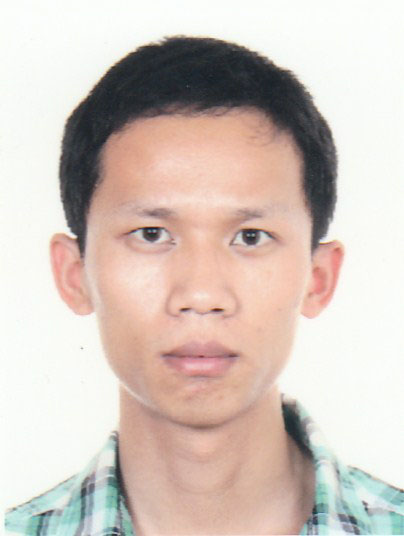

Name:Yuqiang Fang
Gender:Man
Title:
Native place:
Date of Birth:
Political Status:
Degree:
Education School: School of Mechanical Science and Engineering
Department:Derpartment of Engineering Mechanics
Social Appointments:
Email:
Tel:
Research Field:
Dr. Yuqiang Fang is a lecturer in Department of Engineering Mechanics, School of Mechanical Science and Engineering, Jilin University. He received his PhD degree fromDepartment of Mechanical and Biomedical Engineering, City University of Hong Kong in 2015. He received the B.E. Degree (2009) and the M.E. Degree (2012) in Chemical Engineering from Nanjing University of Science and Technology. His research interests include mechanical measurements and modeling of cells, development of cell mechanics as new biomarkers of human diseases, and investigation of subcellular mechanism of cell mechanical changes. His research on mechanical monitoring of neuronal cells in disease states (e.g. neurodegeneration in Alzheimer’s disease and Chemotherapy) has been published in high-rank peer reviewed journals. He has won several rewards such as the Best Conference Paper in IEEE International Conference on Nanotechnology(IEEE-NANO,2013), Outstanding Academic Performance Award (CityU, 2014) and Research Tuition Scholarship (CityU, 2015).
Education
Ph.D., Mechanical and Biomedical Engineering, City University of Hong Kong 2012-2015
M.S., Military Chemistry and Pyrotechnics, Nanjing University of Science and Technology 2009-2012
B.S., Biological Engineering, Nanjing University of Science and Technology 2005-2009
Awards/Honors
Research Tuition Scholarship City University of Hong Kong 2014-2015
Outstanding Academic Performance Award City University of Hong Kong 2013-2014
Best Conference Paper Award IEEE NANO 2013 Committee 2013
Representative Publications
ADDIN Mendeley Bibliography CSL_BIBLIOGRAPHY [1] Y. Fang and K. W. C. Lai, “Modeling the mechanics of cells in the cell-spreading process driven by traction forces,” Phys. Rev. E, vol. 93, no. 4, p. 42404, Apr. 2016.
[2] N. P. B. Au, Y. Fang, N. Xi, K. W. C. Lai, and C. H. E. Ma, “Probing for chemotherapy-induced peripheral neuropathy in live dorsal root ganglion neurons with atomic force microscopy,” Nanomedicine Nanotechnology, Biol. Med., vol. 10, no. 6, pp. 1323–1333, Mar. 2014.
[3] Y. Fang, C. Y. Y. Iu, C. N. P. Lui, Y. Zou, C. K. M. Fung, H. W. Li, N. Xi, K. K. L. Yung, and K. W. C. Lai, “Investigating dynamic structural and mechanical changes of neuroblastoma cell s associated with glutamate-mediated neurodegeneration,” Sci. Rep., vol. 4, p. 7074, Nov. 2014.
[4] Y. Fang, K. W. C. Lai, C. N. P. Lui, C. K. M. Fung, K. K. L. Yung, and N. Xi, “Investigation of retinoic acid induced phenotype of neuroblastoma cells,” 14th IEEE Int. Conf. Nanotechnol. (IEEE-NANO 2014), pp. 4–7, Aug. 2014.
[5] Y. Fang, K. W. C. Lai, C. Y. Y. Iu, C. N. P. Lui, C. K. M. Fung, H.-W. Li, K. K. L. Yung, and N. Xi, “Study of morphological changes of neuroblastoma cells induced by activation of NMDA receptor,” 7th IEEE Int. Conf. Nano/Molecular Med. Eng., pp. 83–86, Nov. 2013.
[6] Y. Fang, K. W. C. Lai, C. Y. Y. Iu, C. N. P. Lui, C. K. M. Fung, H.-W. Li, K. K. L. Yung, and N. Xi, “Investigation of N-methyl-D-aspartate induced mechanical behavior of neuroblastoma cells using atomic force microscopy,” 2013 13th IEEE Int. Conf. Nanotechnol. (IEEE-NANO 2013), pp. 329–332, Aug. 2013.
[7] Y. Fang, Y. Ye, R. Shen, P. Zhu, R. Guo, Y. Hu, and L. Wu, “Mixing enhancement by simple periodic geometric features in microchannels,” Chem. Eng. J., vol. 187, pp. 306–310, Apr. 2012.